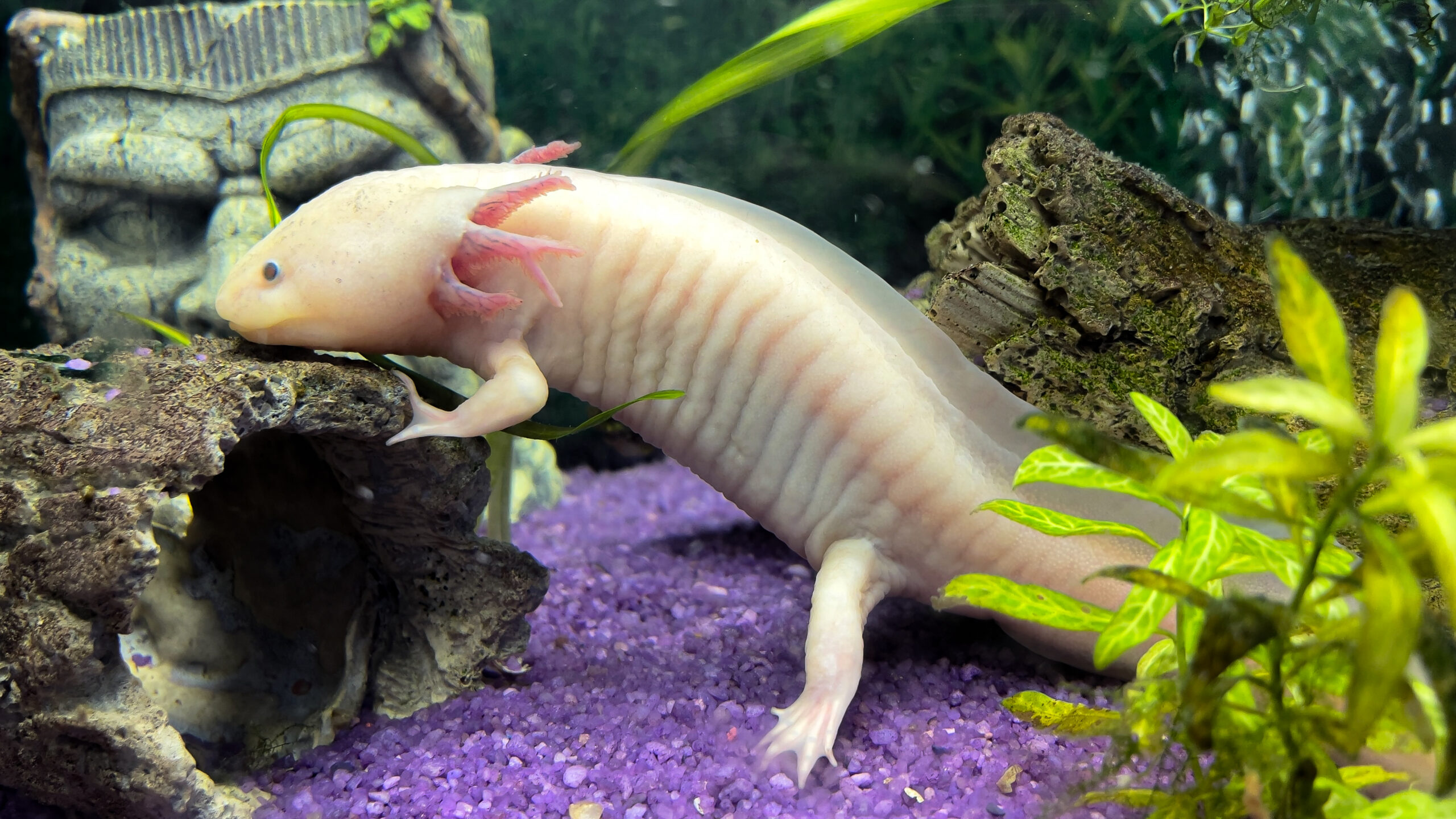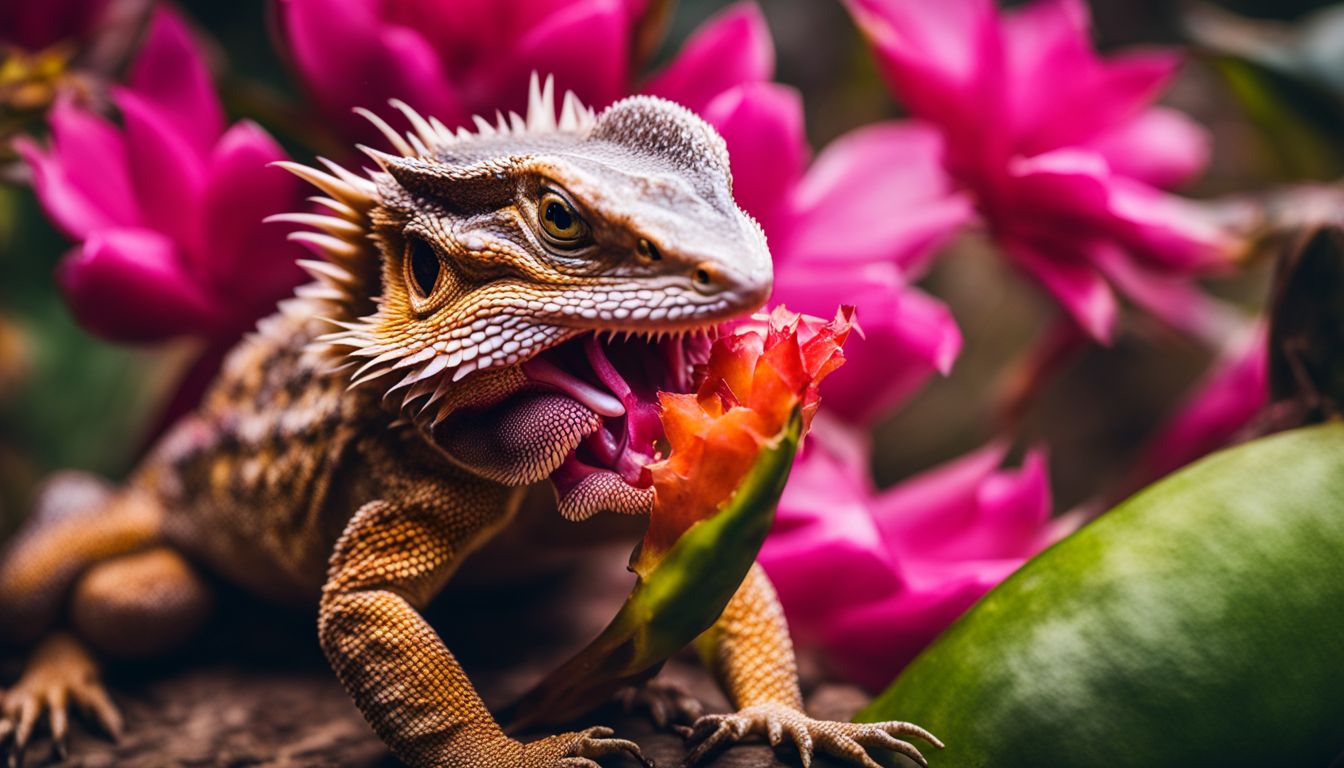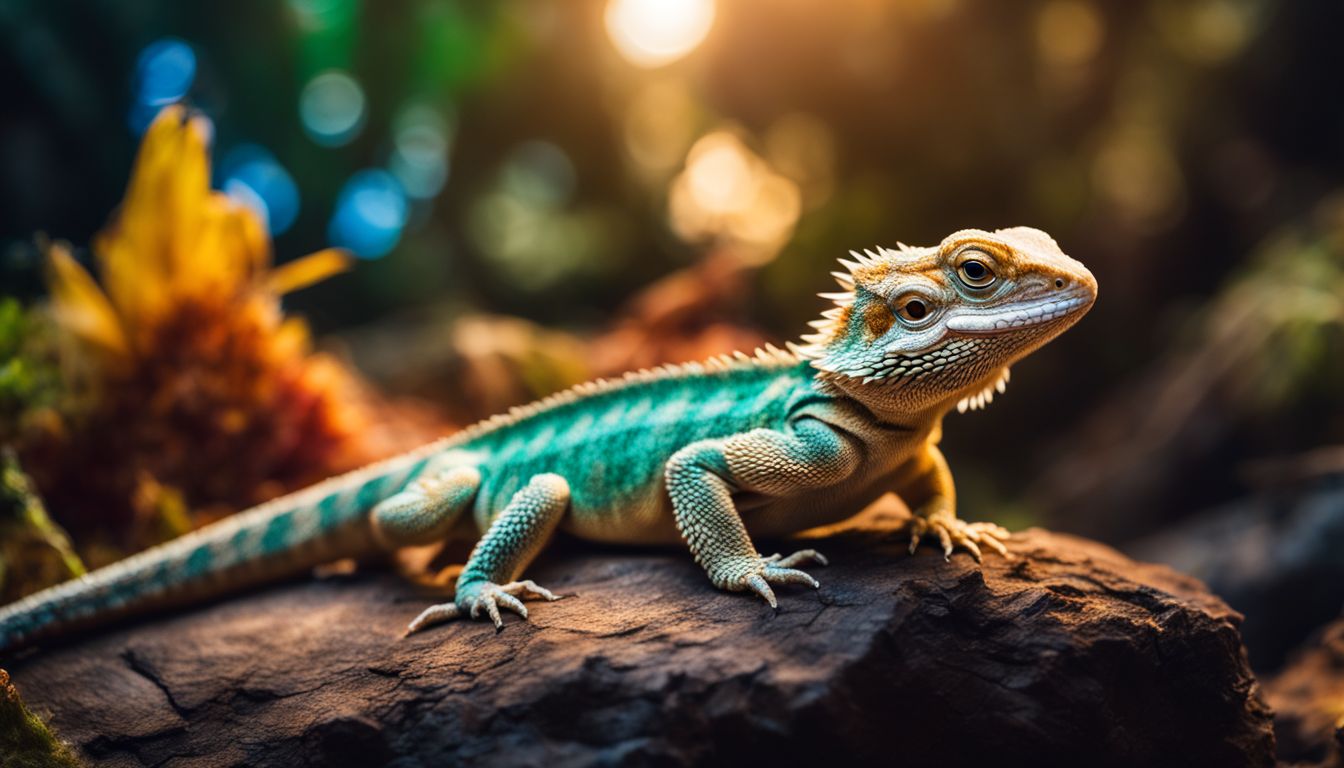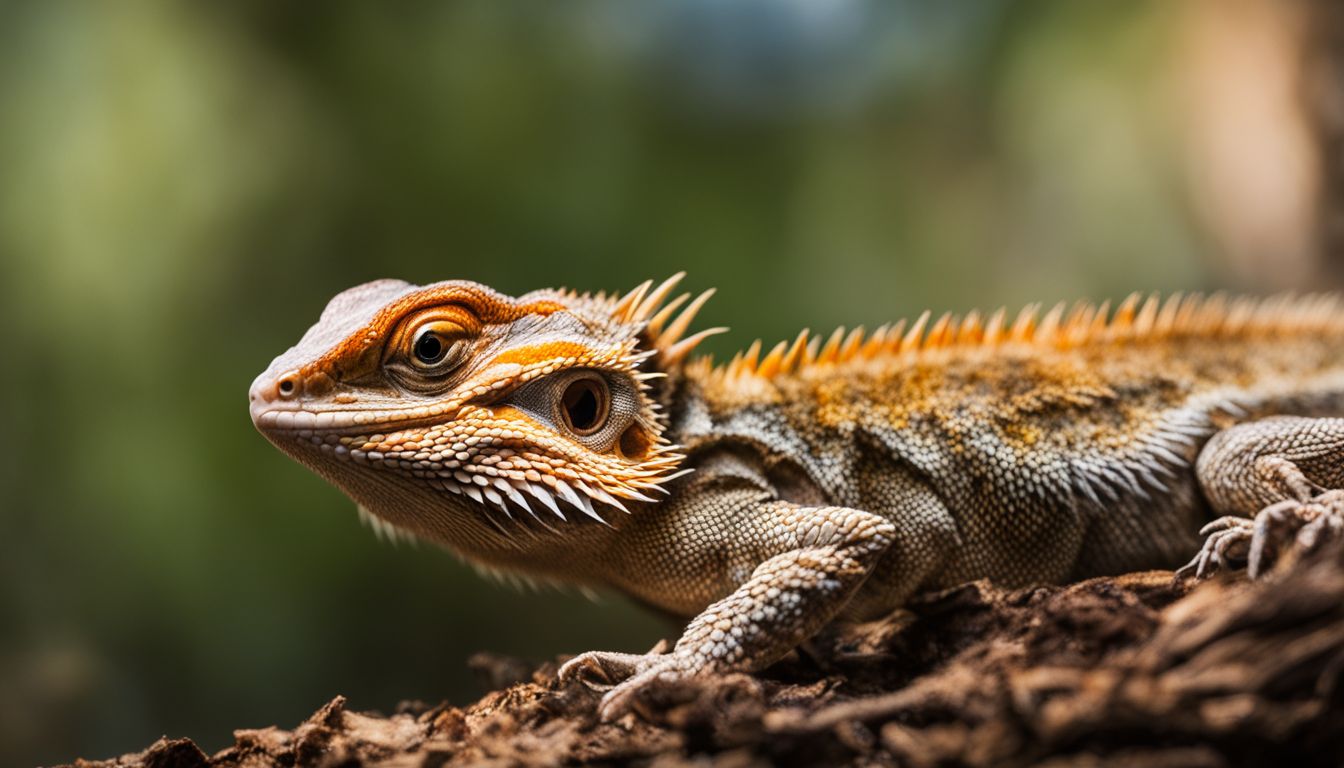The axolotl, a captivating and unusual aquatic creature, has captured the hearts of pet enthusiasts worldwide. With their seemingly eternal youth and regenerative abilities, it’s no wonder these fascinating amphibians are shrouded in myths and misconceptions.
As they grow in popularity, many potential owners find themselves asking just how long do axolotls live? In this comprehensive guide to understanding the truth about axolotl lifespan in captivity, we will dispel common myths while providing essential tips on extending your axolotl’s life expectancy.
Key Takeaways
- The average lifespan of axolotls in captivity is 10 – 15 years, but proper care can extend their lifespan up to 20 years.
- Factors such as tank conditions, diet, stress levels, genetics, and early detection and treatment of illnesses can influence an axolotl’s lifespan in captivity.
- Axolotls do not live forever. Their neotenic state may give them a youthful appearance, but their average lifespan is shorter than in the wild due to factors such as genetics and tank conditions.
- Providing optimal tank setup and maintenance routines, offering a varied diet of live or frozen foods high in nutrients while avoiding overfeeding processed pellets, monitoring for signs of illness are key tips to ensuring a long and healthy life for captive axolotls.
Understanding Axolotl Lifespan In Captivity
Axolotls have an average lifespan of 10-15 years in captivity, but proper care and maintenance can extend their lifespans up to 20 years.
Average Lifespan Of Axolotls In Captivity
The average lifespan of axolotls in captivity is considerably longer than their life expectancy in the wild, ranging from 10 to 15 years. This remarkable longevity among aquatic creatures can be attributed to the controlled and stable environment provided by a well-maintained tank, free from predators and other threats observed in their natural habitat.
It’s worth noting that an axolotl’s lifespan may vary based on factors such as genetics, diet, and overall health. Some individuals might even surpass the age of 15 with diligent care from experienced hobbyists or professionals.
Factors That Can Affect Axolotl Lifespan
Numerous factors can influence the lifespan of axolotls in captivity, making it crucial for owners to be aware and address these aspects to ensure their pets thrive. The following are some key elements that can impact how long axolotls live:
- Tank conditions: Providing an optimal environment, including clean water, appropriate temperature (ideally between 16-20°C), and adequate space in the tank, is essential to support their health and longevity.
- Diet: A well-rounded diet that includes a variety of high-quality foods such as earthworms, brine shrimp, bloodworms, or pellets specifically designed for axolotls will help meet their nutritional needs.
- Stress levels: Minimizing stress by maintaining consistent water parameters and avoiding environmental changes can lead to a healthier axolotl with a potentially longer lifespan.
- Proper tank maintenance: Regular cleaning and monitoring of water quality will prevent harmful toxins or bacteria from building up in the tank, contributing to a healthier environment for your axolotl.
- Genetics: Just like in other animals, genetics may play a role in determining the overall health and life expectancy of your axolotl.
- Early detection and treatment of illnesses: Keeping an eye on your axolotl’s behavior and appearance for signs of illness or injury allows you to address any potential health issues promptly before they become severe.
By understanding these factors and taking necessary precautions when caring for your pet axolotl, you can help maximize its chances of living a long and healthy life in captivity.
Common Misconceptions About Axolotl Lifespan
Many people believe that axolotls can live forever, but this is simply not true. In fact, their lifespan in captivity is actually shorter than in the wild due to factors such as genetics and tank conditions.
Dispelling Myths About Axolotls Living “forever”
The myth that axolotls can live “forever” has been circulating for quite some time, often leaving people with unrealistic expectations about the lifespan of these fascinating amphibians.
One reason behind this misconception stems from axolotl’s neotenic state, which means they retain juvenile features throughout their entire lives. This unique trait may give them an appearance of eternal youth, but in fact, their average lifespan in captivity usually ranges between 10 to 15 years.
Differences In Lifespan Between Wild And Captive Axolotls
Axolotls in the wild have an average lifespan of 5-6 years. This can be attributed to their constant exposure to predators, diseases, and changing environmental conditions.
On the other hand, axolotls kept in captivity tend to live longer with proper care.
Additionally, wild axolotls may not receive a consistent food supply leading them to expend more energy while hunting for food which could contribute to their shorter lifespan compared to their captive counterparts who are provided with a controlled environment and a regular source of nutrition.
Tips To Extend Your Axolotl’s Lifespan
Provide your axolotl with a suitable tank setup and maintenance routine, including proper filtration and regular water changes, to ensure optimal living conditions for a longer lifespan.
Additionally, offer them a varied diet of frozen or live foods, avoiding processed pellets or flakes that lack nutrition.
Providing Proper Tank Setup And Maintenance
Proper tank setup and maintenance are essential in extending the lifespan of an Axolotl in captivity. Here are some tips to ensure you are providing the best environment for your pet:
Dos
- Use a tank that is at least 20 gallons in size to provide ample space for swimming.
- Ensure the tank has a lid to prevent escape and maintain proper humidity levels.
- Use low lighting to mimic their natural habitat, as Axolotls prefer dimly lit areas.
- Keep the water cool (between 60 – 68°F) and avoid sudden temperature changes that can stress them out.
- Use a filter to keep the water clean and provide good circulation.
- Perform regular water changes (20% every two weeks) to maintain good water quality.
- Avoid using chemicals or additives unless necessary, as they can harm your Axolotl.
By following these guidelines, you can provide a healthy and comfortable home for your Axolotl, which will help ensure a long lifespan.
Ensuring A Nutritious Diet
One of the most important factors in extending an axolotl’s lifespan is providing a nutritious diet. Here are some tips for ensuring that your axolotl receives a well-balanced and healthy diet:
- Feed live food: Axolotls typically feast on live food such as earthworms, bloodworms, and blackworms. These foods are high in protein and other essential nutrients that axolotls need to thrive.
- Provide frozen options: If you can’t provide live food, consider offering frozen brine shrimp and earthworms. These foods are readily available and still offer the necessary nutrients for your axolotl’s diet.
- Avoid overfeeding: Axolotls have a slow metabolism, so it’s important to avoid overfeeding them. Only feed them small amounts of food at a time, and remove any uneaten food within 15 minutes.
- Supplement with pellets: High-quality axolotl-specific pellets can supplement their diet with additional nutrients. Choose pellets that are high in protein, low in fat, and contain vitamins and minerals like calcium and phosphorus.
- Offer variety: In the wild, axolotls feed on snails, worms, crustaceans, small fish, and small amphibians. Providing a varied diet can help ensure that your axolotl is getting all the nutrients they need.
By following these tips, you can help extend your axolotl’s lifespan by ensuring they receive a nutritious and balanced diet.
Monitoring For Signs Of Illness
It is important to keep a close eye on your axolotl’s health as they can be susceptible to illnesses. Here are some signs to look out for:
- Lethargy or lack of activity
- Loss of appetite or refusing to eat
- Abnormal swimming behavior, such as floating on the surface or struggling to swim
- Redness or swelling around the gills and mouth
- Unusual growths on the skin or body
Regularly checking your axolotl’s behavior and appearance can help you detect any signs of illness early on. Seeking veterinary care as soon as possible is crucial if you notice any concerning symptoms. Additionally, maintaining proper water conditions and providing a balanced diet can help prevent illnesses from developing in the first place.
Conclusion On Axolotl Lifespan In Captivity 💭
In conclusion, understanding the lifespan of axolotls is crucial for their proper care and well-being in captivity. While some myths may claim that these amazing creatures can live forever, the truth is that they typically live up to 10-15 years with proper care.
Providing a suitable tank setup, feeding them a nutritious diet, and monitoring their health for signs of illness are all key factors in extending an axolotl’s lifespan.
FAQs:
What is the average lifespan of an axolotl in captivity?
The average lifespan of an axolotl in captivity ranges from 10 to 15 years, but with proper care and maintenance, they can live up to 20 years.
How can I ensure the longevity of my axolotls?
To ensure a long and healthy life for your axolotls, you should maintain optimal water quality, provide them with a balanced diet consisting of live foods, avoid exposing them to extreme temperatures or chemicals, regularly clean their tank and perform routine health checks.
Can environmental factors affect an axolotl’s lifespan?
Yes, environmental factors such as pH levels, oxygenation level & temperature fluctuations may significantly impact the overall health and lifespan of your pet Axolotls. As they are sensitive aquatic creatures – it is important to keep their environment well-maintained so that they remain healthy while living in captivity.
How do I determine if my Axolotl needs veterinary care?
If you notice any abnormal behavior or physical changes like discoloration on its skin or fins / lack of appetite / weight loss/ floating – seek expert guidance immediately. These could be signs of illness that require prompt attention from a veterinarian specializing in amphibian health care.





Leave a Reply